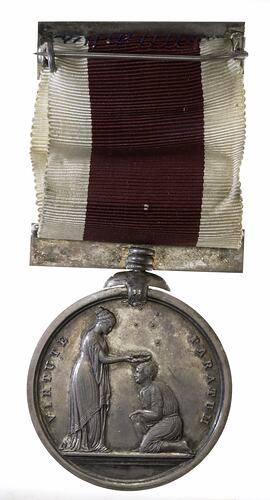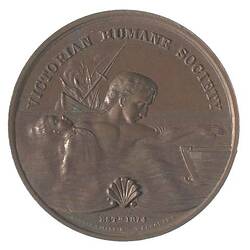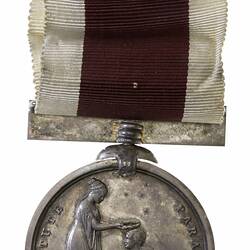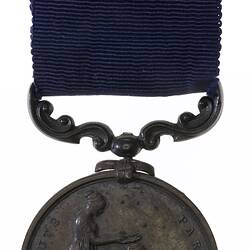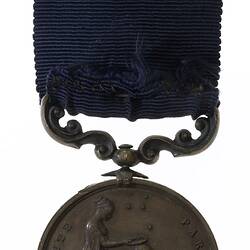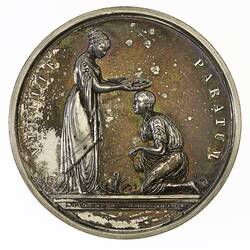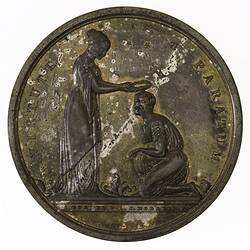The Society was founded in 1874 as the Victorian Humane Society after the pilot schooner Rip was badly damaged in high seas at Point Nepean. A seaman clinging to a broken mast that was endangering the schooner told his mates to cut him adrift to save the vessel. Melburnians were inspired by his bravery, and a newspaper correspondent, Mr John Wilks, suggested that a Humane Society be formed along the basis of the Royal Humane Society in England. Preliminary meetings were held at the instance of the Hon. George Selth Coppin, M.L.C, and the Society was formally inaugurated as the Victorian Humane Society at a public meeting in the Melbourne Town Hall on 28 September 1874.
The operations of the Victorian Humane Society were extended, and in 1882 its directors obtained through the Governor of Victoria the consent of Her Majesty the Queen to assume the title of 'The Royal Humane Society of Australasia'. The Society thus became the first federal institution in Australia. The first objective of the Society was to bestow awards upon people who risked their lives to save others. The second objective was to assist recipients who were disadvantaged or disabled as a result of their brave actions, or to assist their surviving dependents. Initially the Society also arranged swimming and lifesaving training, but other organisations later took over this role. For many years it was located in the Old Customs House, Flinders Street.
In 1881 Sir William Clarke made a grant of 250 pounds to the Society, from which the Clarke medal was established. Awarded in gold or silver, the Clarke medal was the Society's highest award.
Four classes of awards are issued today: gold, silver, bronze and a certificate of merit. Other medals include the Rupert Wilks Trophy for the most outstanding bravery by a child under 13.
References:
Website of the Royal Humane Society of Australasia http://www.rhsa.org.au/
Faringdon-Davis, John (1984). 'The Royal Humane Society'. Australian Numismatist, 5 August, pp. 2-15.
South Australian Numismatic Journal. Vol.7 [2]. April 1956, p.13
More Information
-
Keywords
-
Localities
-
Authors
-
Article types
